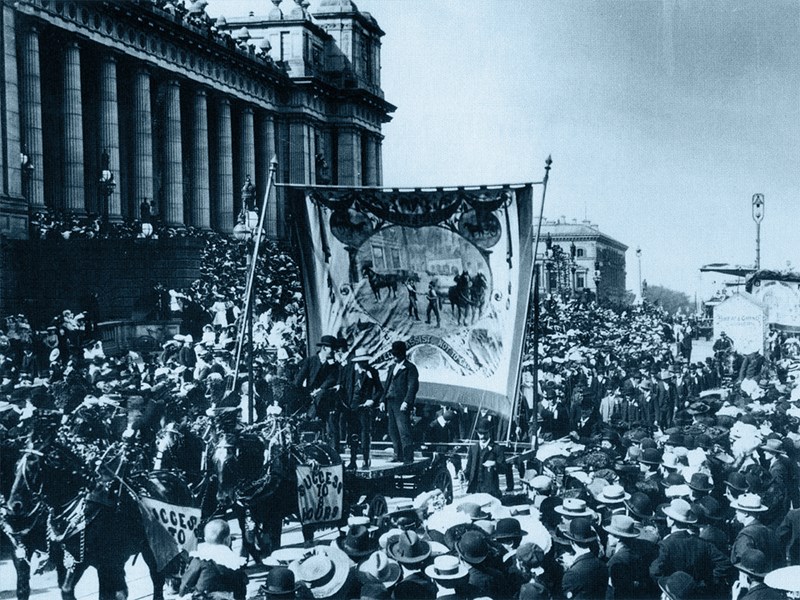The workday revolution

Come and see how young Tommy’s life improved with the introduction of the eight-hour workday in Victoria. Find out how his dad and his workmates agitated for a fair go. Did his mum get a fair go too?
Open 'The workday revolution'
The workday revolution is a collection of resources that uses the introduction of the 8-hour workday – a significant moment in Victoria's parliamentary history - as a starting point for investigating how workers of the day rallied together to fight for fairer working conditions, something many of us are still benefitting from today.
The stories have been brought to life by students through rich-media storytelling. The resource also includes comprehensive lesson plans and digital resources for teachers.